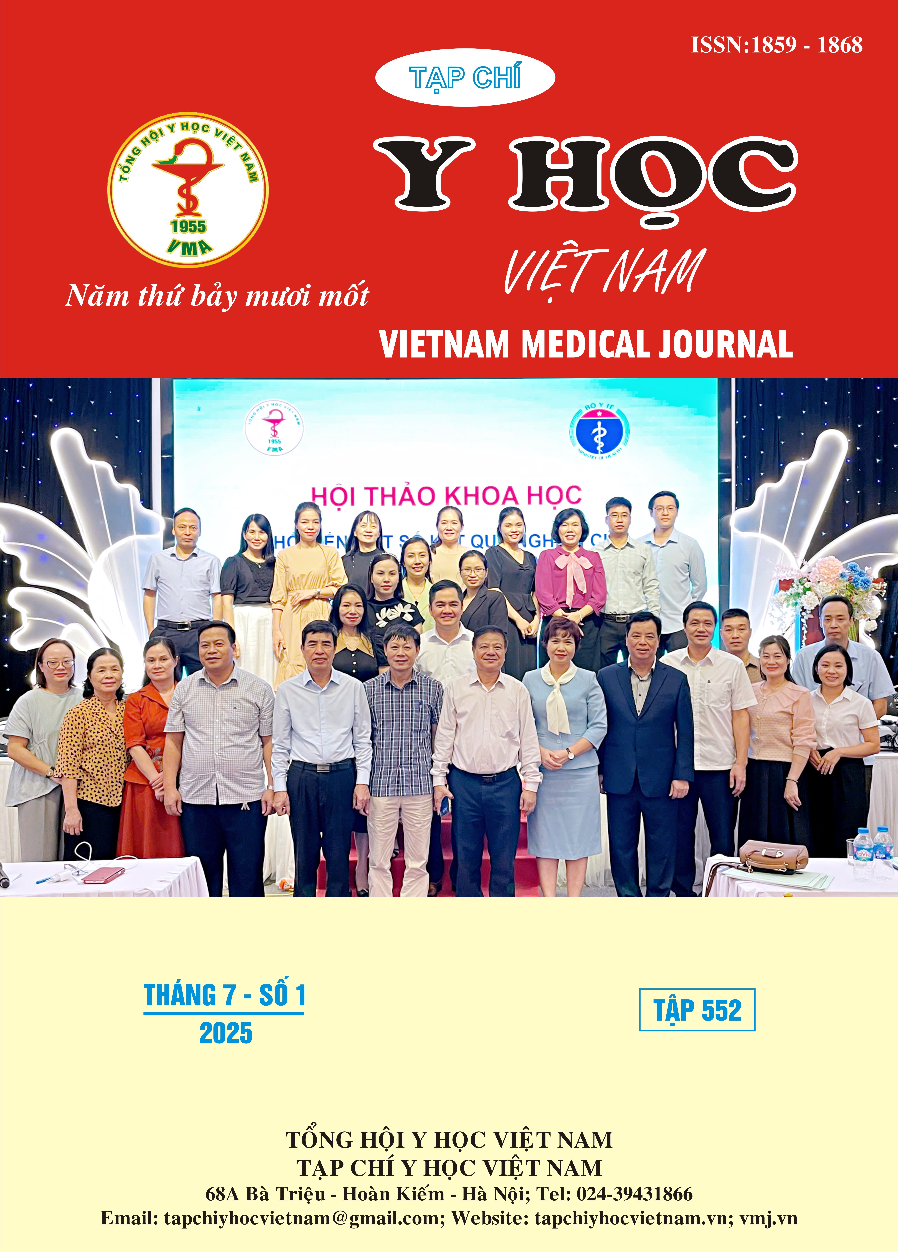NGHIÊN CỨU TÌNH HÌNH VÀ MỘT SỐ YẾU TỐ LIÊN QUAN ĐẾN NGUY CƠ SUY DINH DƯỠNG THEO NRS-2002 Ở BỆNH NHÂN NỘI TRÚ TẠI BỆNH VIỆN TRƯỜNG ĐẠI HỌC Y DƯỢC CẦN THƠ
Nội dung chính của bài viết
Tóm tắt
Mục tiêu nghiên cứu: Đánh giá tỷ lệ và các yếu tố liên quan đến nguy cơ suy dinh dưỡng ở bệnh nhân nội trú. Đối tượng và phương pháp nghiên cứu: Nghiên cứu mô tả cắt ngang trên 150 bệnh nhân nội trú tại Bệnh viện Trường Đại học Y Dược Cần Thơ năm 2024-2025. Nguy cơ suy dinh dưỡng được đánh giá bằng công cụ NRS-2002. Kết quả: tỷ lệ nguy cơ suy dinh dưỡng theo NRS-2002 là 48,7%. Các yếu tố liên quan có ý nghĩa thống kê gồm: tuổi ≥60, BMI thấp và yếu tố tôn giáo. Trong đó, nhóm bệnh nhân ≥60 tuổi có nguy cơ suy dinh dưỡng cao hơn đáng kể (65,9%) so với nhóm dưới 60 tuổi (24,2%). Nhóm bệnh nhân suy dinh dưỡng theo BMI đều có điểm NRS-2002 ≥3. Điểm NRS-2002 tương quan thuận mạnh với tuổi (ρ=0,59), chứng tỏ tuổi càng cao nguy cơ càng tăng; và tương quan nghịch với BMI (ρ=-0,59), cho thấy chỉ số BMI càng thấp thì nguy cơ suy dinh dưỡng càng cao. Kết luận: Nên triển khai sàng lọc dinh dưỡng bằng NRS-2002 và tăng cường tư vấn dinh dưỡng nhằm nâng cao hiệu quả điều trị cho bệnh nhân nội trú.
Chi tiết bài viết
Từ khóa
suy dinh dưỡng, NRS-2002, bệnh nhân nội trú, tư vấn dinh dưỡng, yếu tố liên quan
Tài liệu tham khảo
2. Pirlich M, et al. Prevalence of malnutrition in hospitalized medical patients: impact of underlying disease. Clin Nutr. 2006;25(4):563–9. https://doi.org/10.1016/j.clnu.2006.03.012
3. Volkert D, et al. ESPEN guideline on clinical nutrition and hydration in geriatrics. Clin Nutr. 2019;38(1): 10–47. https://doi.org/10.1016/ j.clnu.2018.05.024
4. Kondrup J, et al. ESPEN guidelines for nutrition screening 2002. Clin Nutr. 2003;22(4):415–21. https://doi.org/10.1016/S0261-5614(03)00098-0
5. Correia MITD, et al. The impact of malnutrition on morbidity, mortality, length of hospital stay and costs evaluated through a multivariate model analysis. Clin Nutr. 2003;22(3):235–9. https://doi.org/10.1016/S0261-5614(02)00215-7
6. Marshall S, et al. Malnutrition in geriatric rehabilitation: prevalence, patient outcomes, and criterion validity of the scored patient-generated subjective global assessment and the mini nutritional assessment. J Acad Nutr Diet. 2016;116(5): 785–94. https://doi.org/10.1016/ j.jand.2015.10.020
7. Detsky AS, et al. What is subjective global assessment of nutritional status? JPEN J Parenter Enteral Nutr. 1987;11(1):8–13. https://doi.org/10. 1177/014860718701100108
8. Bộ Y tế. Thông tư số 18/2020/TT-BYT ngày 12 tháng 11 năm 2020 về hướng dẫn công tác dinh dưỡng trong bệnh viện. Hà Nội: Bộ Y tế; 2020.


